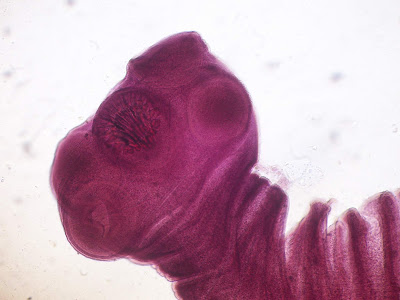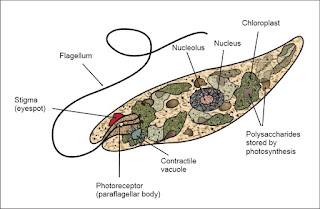General Characteristics and Classification of Protozoa
A Brief introduction to Phylum Protozoa
The Protozoa are heterogeneous gathering of somewhere in the range of 50,000 cell or single-cell life form discovered worldwide in many environments. Protozoa signifies 'first creature' the least difficult type of creature life.
Protozoa are unicellular microorganisms (eukaryotes) that need cell dividers. They are found in
marine living space or soil, in new water bodies, advantageous, a few structures are parasites in other
life forms. Protozoa relies upon nourishment, temperature, pH, and some relies upon daylight.
Protozoa were characterized as unicellular protists with creature like conduct, for example, development.
Protozoa were viewed as the accomplice gathering of protists to protophyta, which have plant-like
conduct, for example photosynthesis. The term protozoan has gotten exceptionally hazardous due to the presentation of current ultra basic, biochemical, and hereditary systems, which have appeared
that the gathering doesn't frame a clade as required by current characterizations. Present day
unicellular clades inside Eukaryotes which might be seen as roughly aggregately supplanting the class of protozoa include: Excavata, Amoeba, Chromalveolata and Rhizaria.
Protozoans are normally single-celled heterotrophic eukaryotes containing non-filamentous
structures that have a place with any of the significant genealogies of protists. They are limited to soggy or oceanic living spaces (i.e., they are commit amphibian life forms). Numerous protozoan species are symbionts, some are parasites, and some are predators of excrement microorganisms and green growth. There are an assessed 50,000 protozoan species.
GENERAL CHARACTERS -
1. They are simple Eukaryotic organisms.
2. Most of the organisms are unicellular,some are colonial,and some are multicellular like algae.
3. Most of the protists live in water, some in moist soil or even in the body of human and plants.
4. They have mitochondria for cellular respiration and some have chloroplasts for photosynthesis.
5. They have membrane bound nucleus and endo-membrane system.
6. Movement is often by flagella or cilia.
7. Have Cellular respiration.
8. Nutrition can be both heterotrophic or autotrophic.
9. Some species have complex life cycle involving multiple organisms. eg, Plasmodium. Some reproduce sexually and some asexually.
10. They forms cysts in adverse conditions.
11. They are major component of planktons.
Classification of Protozoa-
Phylum Protozoa has been classified into four sub-phylum:-
Sub-phylum 1. Sarcomastigophora
Sub-phylum 2. Sporozoa
Sub-phylum 3. Cnidospora
Sub-phylum 4. Ciliophora
SUBPHYLUM I: SARCOMASTIGOPHORA
1. Locomotors organelles pseudopodia or flagella or both.
2. Nucleus one or more and of the same kind.
3. Asexual reproduction by binary and multiple fission. . This subphylum is further divided in to 3 super classes:
Superclass 1: Mastigophora
The body of the animals belonging to this super class is covered by pellicle. The locomotory organelles are flagella. In this super class the asexual reproduction occurs by longitudinal binary fission. This super class includes 2 classes:
Class 1: Phytomastigophora
They have chromatophores with chlorophyll. The nutrition in these organisms is mainly holophytic which takes place by phototrophy. These are free living organisms. The reserve food in these organisms is starch or paramylon. These organisms may have 1 or 2 flagella.
Ex: Euglena, Ceratium, Noctiluca
Class 2: Zoomastigophora
These organisms do not have chlorophyll bearing chromatophores. These are mostly parasitic. The nutrition in these organisms is holozoic or saprozoic. The reserved food is glycogen. They may have one to many flagella.
Ex: Leishmania, Trypanosoma, Trichomonas, Trichonympha
Superclass 2: Opalinata
The organisms belonging to this super class live as commensals or parasites in the gut of anurans. Their body is covered by oblique rows of cilia-like flagella. These organisms may have 2 or many nuclei also the nuclei are monomorphic. They undergo asexual reproduction by binary fission or by syngamy. Sexual reproduction takes place by anisogamy.
Ex: Opalina, Zelleriella
Superclass 3: Sarcodina
The locomotion in the organism belonging to this superclass is brought about by pseudopodia. Their body is amoeboid without definite pellicle. The nutrition is holozoic or saprozoic. This super class is further divided into 3 classes:
Class 1: Rhizopodea
The pseudopodia of the animals in this class are in the form of lobopodia, filopodia or reticulopodia without axial filaments. This class includes amoebas, foraminiferans and mycetozoans. These animals are mostly free living and a few are also parasitic. In amoebas, the body is naked; in foraminiferans the body is covered by porous calcareous shell.
Ex: Amoeba, Entamoeba, Elphidium
Class 2: Piroplasmea
The animals belonging to this class are parasitic. Locomotory structures are absent in this class. Spores are also absent. These are the small parasites in the red blood cells of vertebrates.
Ex: Babesia
Class 3: Actinopodea
The pseudopodia of the animals belonging to this class are in the form of axopodia with axial filaments, radiating from the spherical body. These are planktonic. This class includes Heliozoans, Radiolarians and acanthareans. Radiolarians and acanthareans are marine forms whereas heliozoans are both marine and fresh water forms. Skeletons of radiolarians have siliceous shells. The shells of dead radiolarians accumulate on the ocean floor to form radiolarian ooze.
Ex: Collozoum, Actinophrys, Acanthometra
SUBPHYLUM II: SPOROZOA
1. Exclusively endoparasites.
2. Body with thick pellicle.
3. Locomotor organelles absent in adult.
4. Nutrition saprozoic.
5. Asexual reproduction by multiple fission and sexual reproduction by syngamy
followed by spore formation.
6. Life cycle includes both asexual and sexual phase.
This subphylum includes 3 classes:
Class 1: Telosporea
The Sporozoites are long in these animals. Reproduction is both asexual and sexual. They are blood and gut parasites of vertebrates. Sexual reproduction is by isogamy or anisogamy.
Ex: Monocyctis, Eimera, Plasmodium
Class 2: Toxoplasmea
In this class reproduction is only asexual type which takes place by internal budding where two daughter cells are produced within the mother cell and the mother cell is finally destroyed in the process of reproduction. Spores are absent.
Ex: Toxoplasma
Class 3: Haplosporea
The spores in this class are amoeboid. Also reproduction is only asexual type taking place through multiple fissions.
Ex: Haplosporidium, Ichthyosporidium
SUBPHYLUM III: CNIDOSPORA
1. Trophozoite has many nuclei.
2. Spore formation occurs throughout life.
3. Spores contain polar capsules with polar filaments.
This subphylum includes 2 classes:
Class 1: Myxosporidea
The spores of the animals of this class are large and develop from several nuclei. These are generally extracellular parasites. The spores of this class have two polar filaments and have two to three valves
Ex: Myxobolus
Class 2: Microsporidea
The spores of the animals of this class are small and are developed from only one nucleus. These spores have single valve. These are generally intracellular parasites. Many of the animals of this class have a single polar filament.
Ex: Nosema bombycis
SUBPHYLUM IV: CILIOPHORA
1. Body organization complex.
2. Presence of cilia as feeding and locomotory organelles at some stage in the life cycle.
3. Two types of nuclei- micronucleus and macronucleus are present.
4. Asexual reproduction by binary fission or budding.
5. Sexual reproduction by conjugation.
Only one class is included in this subphylum:
Class 1: Ciliatea
The locomotory organelles of these animals are numerous hair-like cilia. One or more contractile vacuoles are present in these forms. The nucleus is dimorphic including both macro nucleus and micronucleus.
Ex: Paramoecium, Vorticella, Balatidium



Comments
Post a Comment